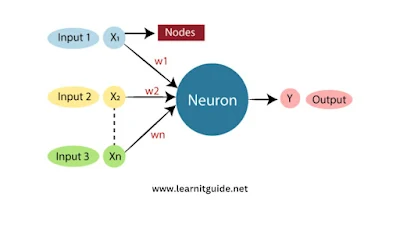This post will help you to understand about Artificial Neural Networks in Machine Learning.
If you are interested in learning, Request you to go through the below recommended tutorial.
DevOps Full Course Tutorial for Beginners - DevOps Free Training Online
Docker Full Course Tutorial for Beginners - Docker Free Training Online
Kubernetes Full Course Tutorial for Beginners - Kubernetes Free Training Online
Ansible Full Course Tutorial for Beginners - Ansible Free Training Online
Openstack Full Course Tutorial for Beginners - Openstack Free Training Online
Artificial Neural Networks in Machine Learning
Artificial Neural Networks (ANNs) are a subfield of machine learning that have revolutionized the way we approach complex data analysis tasks. ANNs are a set of algorithms that are designed to recognize patterns in data, and they are modeled after the structure and function of the human brain.
The human brain is made up of billions of neurons, which are connected by synapses that allow them to communicate with each other. ANNs attempt to replicate this structure by using nodes, which are connected by edges that carry signals between them. When a signal is received at a node, it is processed and then passed on to other nodes. By using complex mathematical algorithms, ANNs can learn to recognize patterns in data and make predictions based on that data.
ANNs are used in a wide range of applications, including image recognition, natural language processing, and financial forecasting. In this article, we will explore some of the key concepts of ANNs and their use in machine learning.
Architecture of Artificial Neural Networks
The architecture of an artificial neural network refers to the way in which the nodes and edges are arranged to process data. There are several types of architectures, but the most common ones are feedforward, recurrent, and convolutional.
Feedforward Neural Networks
Feedforward neural networks are the simplest type of ANNs. They consist of an input layer, one or more hidden layers, and an output layer. The input layer receives the data, which is then passed through the hidden layers, where it is processed and transformed, before being passed on to the output layer. The output layer produces the final result.
Recurrent Neural Networks
Recurrent neural networks are used when the data being processed is sequential, such as in natural language processing. They are designed to allow nodes to pass information to themselves, which creates a feedback loop that allows the network to remember previous inputs.
Convolutional Neural Networks
Convolutional neural networks are used for image recognition tasks. They are designed to recognize spatial patterns in data, and they use filters to identify features in an image. The output of the filters is then passed on to the next layer, where the features are combined to produce a final result.
Training Artificial Neural Networks
The process of training an artificial neural network involves feeding it with large amounts of data and adjusting the weights and biases of the nodes until the network is able to accurately recognize patterns in that data.
The most common training method is backpropagation, which involves propagating the error between the predicted output and the actual output back through the network to adjust the weights and biases. This process is repeated many times, with the weights and biases being adjusted after each iteration, until the network is able to accurately predict the output for new data.
Challenges of Artificial Neural Networks
While artificial neural networks are extremely powerful tools for data analysis, they are not without their challenges. One of the main challenges is overfitting, which occurs when the network becomes too specialized in the data it has been trained on and is unable to generalize to new data.
To avoid overfitting, several techniques are used, such as regularization, which adds a penalty term to the cost function, and dropout, which randomly removes nodes from the network during training.
Another challenge is the curse of dimensionality, which occurs when the number of features in the data is very large. This can lead to overfitting and slow training times, and several techniques are used to address this issue, such as feature selection and dimensionality reduction.
Applications of Artificial Neural Networks
Artificial neural networks are used in a wide range of applications, including image recognition, natural language processing, and financial forecasting.
In image recognition, convolutional neural networks are used to recognize patterns in images, and they have been used in a wide range of applications, such as self-driving cars, facial recognition, and medical image analysis.
In natural language processing, recurrent neural networks are used to analyze and understand language. They have been used in applications such as chatbots, sentiment analysis, and machine translation.
In financial forecasting, artificial neural networks are used to analyze complex data and make predictions about financial markets. They have been used in applications such as stock price prediction, credit risk analysis, and fraud detection.
Conclusion
Artificial neural networks have revolutionized the field of machine learning, allowing us to analyze complex data and make accurate predictions in a wide range of applications. While they are not without their challenges, techniques such as regularization and dropout have helped to address issues such as overfitting, and ongoing research is constantly improving their effectiveness.
As technology continues to advance, artificial neural networks are likely to become even more powerful tools for data analysis, allowing us to make even more accurate predictions and gain deeper insights into the world around us.
That’s it for this post, Hope you have got an idea about Artificial Neural Networks in Machine Learning









0 Comments